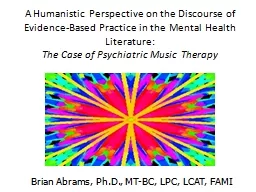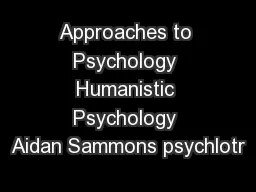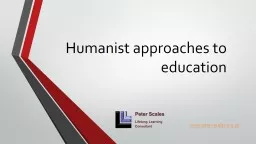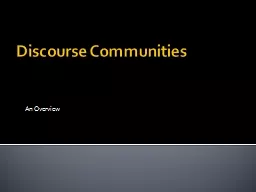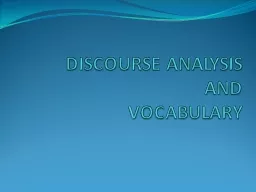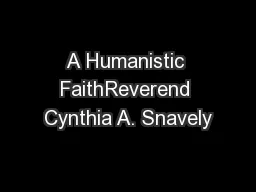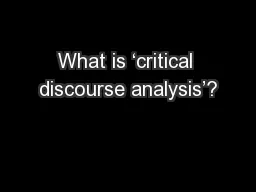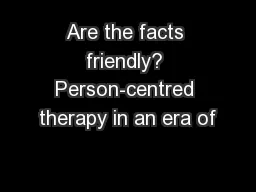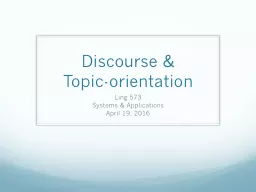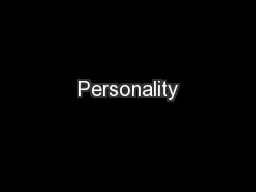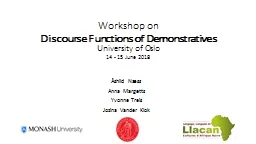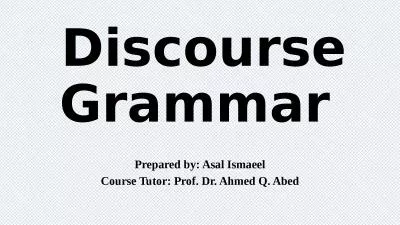PPT-A Humanistic Perspective on the Discourse of Evidence-Based
Author : cheryl-pisano | Published Date : 2017-01-19
The Case of Psychiatric Music Therapy Brian Abrams PhD MTBC LPC LCAT FAMI Evidence Random House nd defines it as That which tends to prove or disprove something
Presentation Embed Code
Download Presentation
Download Presentation The PPT/PDF document "A Humanistic Perspective on the Discours..." is the property of its rightful owner. Permission is granted to download and print the materials on this website for personal, non-commercial use only, and to display it on your personal computer provided you do not modify the materials and that you retain all copyright notices contained in the materials. By downloading content from our website, you accept the terms of this agreement.
A Humanistic Perspective on the Discourse of Evidence-Based: Transcript
Download Rules Of Document
"A Humanistic Perspective on the Discourse of Evidence-Based"The content belongs to its owner. You may download and print it for personal use, without modification, and keep all copyright notices. By downloading, you agree to these terms.
Related Documents

